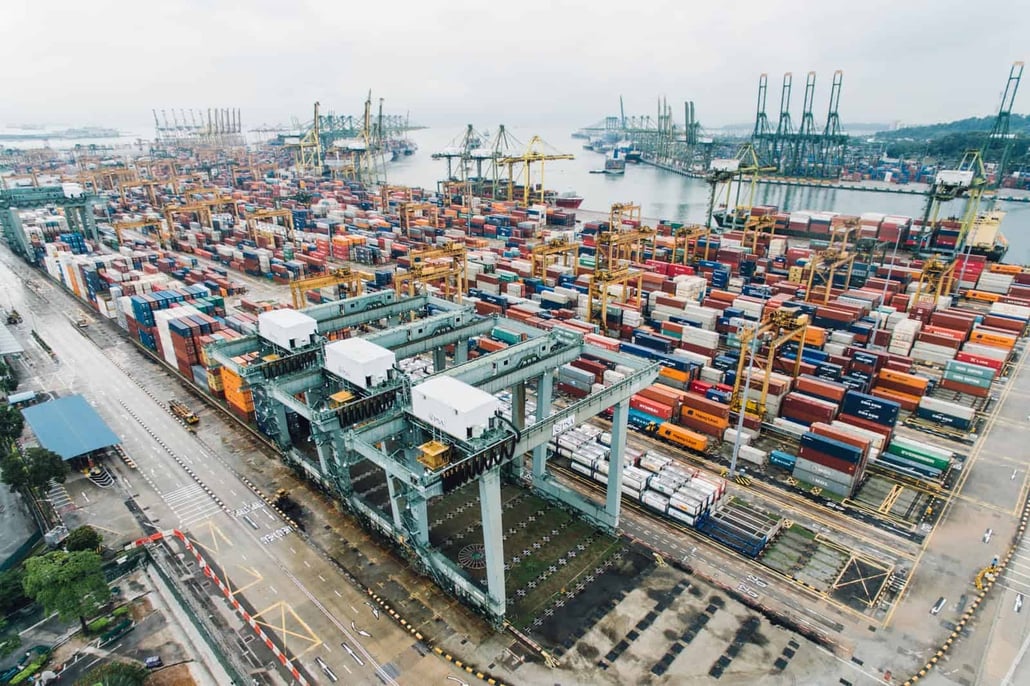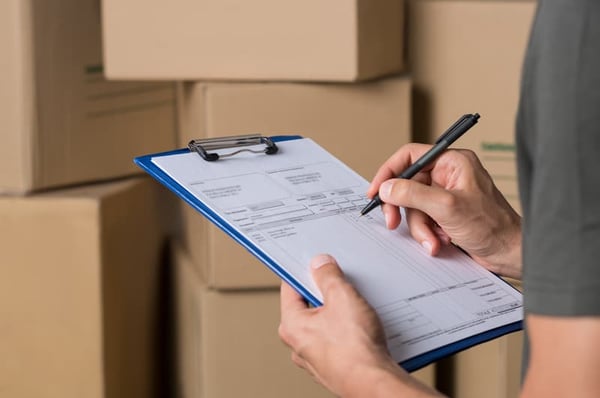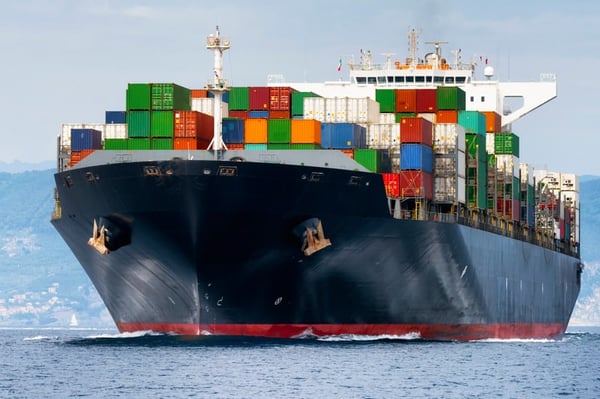TRANSPORTATION MANAGEMENT SYSTEMS
Reducing Freight and Shipping Costs by using a TMS
A good TMS platform should simplify and reduce the cost of shipping for manufacturers, distributors, retailers, and third-party logistics (3PL) providers.
What is a Transportation Management System?
A good TMS platform should simplify and reduce the cost of shipping for manufacturers, distributors, retailers, and third-party logistics (3PL) providers. A lack of an integrated TMS platform leaves companies unable to smoothly process orders, track them, and establish how well their processes are working for their bottom line.
Too often companies rely on inefficient and costly ways like relying on numerous spreadsheets and multiple websites to manage a variety of inbound and outbound shipments.
The carrier rate shopping task alone costs valuable time and money that a TMS system streamlines. A simplified shopping system also helps ensure their employees are following through even finding the best carrier rates for every. single. shipment.
There are five major workflows that make up transportation management.
SHOP - finding the best LTL, parcel, truckload, or international carrier & rates for the job
SHIP - processing the shipment to get it to its destination
TRACKING - tracking the inbound and outbound shipments of goods and raw materials
ANALYZE - analyzing the expenses, routes, service levels, and more
AUDIT - ensuring all carrier charges are accurate and processing refunds
Workflow and Process Automation
Automating workflows where possible - and where it makes sound business sense - helps reduce manual errors, reduces processing time, and increases productivity.
There are many elements to the shop / ship / track / analyze / audit workflows that can be automated down to just a few clicks when a TMS is used. This saves hours of manual work and is a major time saver and efficiency gain!
According to research from ARC Advisory, on average, companies that leverage a TMS report 8% savings in their shipping and logistics management. This is just an 8% savings due to improved labor workflow. It doesn't even include savings from rate shopping.
Rate comparisons are crucial in shipping and logistics circles. Some managers pride themselves on always being able to find the best rate for client shipments, saving money and getting items to their destinations on time and on budget.
But how much time is wasted getting the best deal? And how can you truly be sure that you got the most cost-efficient rate available? Manually shopping around for rates often equates to switching back and forth among carrier websites, comparing the differences in price, and then scheduling the job.
Wouldn't it be easier if all of this information was in a single location?

Pooling Shipments
Optimal TMS solutions support all types of shipments, including Full Truckload (FTL) and Less than Truckload (LTL,) and enable you to granularly view all of the details associated with these loads.
With this level of visibility in place, shipping and logistics stakeholders have the power to better manage their shipment loads, and can even leverage a mode shift strategy. This enables smaller LTL shipments to be gathered together into a larger, more efficient LTL volume, or even a complete FTL.
As FTL shipments are typically less costly, being able to create collective shipments based on individual shipment specifications - including things like delivery destination and arrival date - can help support considerable cost savings and optimize the movement of smaller loads.

Streamlining Freight and Shipping Documents
While the creation and printing of Bills of Lading may not seem like a top area for optimization, simplifying these processes can result in time and resource savings.
An advanced TMS lets you print your own shipping labels for your parcel carriers, as well as your BOLs for LTL, FTL or intermodal carriers.
In this way, you can be sure that all of your shipments are appropriately labeled and have the proper documentation to pass through customs and get to where they need to be.
Additionally, a good TMS not only creates the bill of laden, but allows you to schedule the pickup with the carrier and print any applicable shipping labels directly from the platform as well.
When selecting a TMS you should look for the ability to:
- Print shipping labels for all domestic carriers
- Print SLIs and AWBs for international air and ocean freight carriers
- Print international documentation: customs forms, invoices, packing slips, and etc.
A TMS solution should also allow detailed tracking from pick-up to delivery.
The platform should allow:
- Real-time tracking for all your shipments
- Red flag notifications if something unexpected occurs
- Updates straight from the carrier systems
An industry-leading TMS supports all of these features.

International Shipping
International shipping can be extremely expensive. There are four key ways any business can save money.
1. Think in terms of space - boost density
Supply chain consultant David Martinelli advises that shippers pay extra attention to space and work to increase storage density. Capitalizing on available vertical space, for example, translates to the better use of container or truck space, reducing costly less-than-truckload (LTL) shipments and increasing full-truckload (FTL) shipments.
Not only will better use of space help reduce costs by boosting efficiency, but this approach can also lessen damage to shipments through the elimination of empty space. In this way, it's important to work with a shipping and logistics partner that is particularly conscious of space and efficiency in their use of resources.
2. Consider all options
Competition among shipping and logistics carriers can be a considerable benefit for organizations that require frequent international shipments. This market competition can translate to reduced costs, particularly by carriers looking to carve out a niche and ensure an edge in the marketplace.
In this way, it's imperative to not only consider the big-name familiar carriers for international shipments but also to look at all the available options, including the modes offered. Taking into account the specific schedule shipments must adhere to, it could be more cost efficient to utilize a smaller carrier that supports ocean shipments, for example.
This approach is best achieved with the help of a best-in-class transportation management system that enables users to easily add carriers and compare their options.
3. Take advantage of supplier discounts
Growth Engine’s Bryan Mattimore advises that some suppliers may be willing to take care of certain costs on their end, depending upon elements like shipment quantities.
"Suppliers can sometimes absorb direct logistics costs, but can also be partners in cost reduction." Mattimore said.
It's important that companies and their shipping and logistics partners are able to work together to establish this kind of mutually-beneficial strategy.
4. Streamline the workload with robust TMS capabilities
One of the most essential solutions for reducing international shipping costs is to leverage a best-in-class transportation management system that supports automation and information access that streamlines the overall workflow.
A TMS platform offers the ability to compare available freight rates based on carriers and modes, automated invoice auditing, and capabilities for adding carriers. With added benefits like centralized tracking and integration with other key solutions, a TMS is a crucial resource for today's businesses.

Carrier Rate shopping and discounts
Real-time Carrier & Marketplace Rate Shopping
A strong return on investment is imperative in transportation management.
When it comes to their TMS, shipping and logistics managers and their stakeholders are looking for measurable advantages that can help create ROI, including elements like:
- Capital savings: A TMS should enable shipping and logistics teams to compare shipping options and select the most efficient and least costly. Some TMS software offer an Expedia-like rate shopping experience across multiple transportation modes and can include hundreds of carriers, brokers, and even marketplaces. Best-in-class TMS will include ALL the major transportation modes: parcel, LTL, FTL, international air, ocean, and rail.
- Improving connections with carriers: A TMS improves visibility and insight, as well as help you communicate and negotiate with carriers. Most will offer shipment tracking alerts and notifications.
- Reporting: Metrics, including spending across channels, invoice auditing and other custom reporting can help monitor performance and enable ROI.
Shipping and logistics managers are not only unsurprised when freight rates change - they expect shipping rates to be raised annually, nearly like clockwork. After all, carriers have to adjust their prices according to numerous market factors, and when one main carrier updates their freight fee structures, more often than not, other leading carriers follow suit.
This has been the trend with USPS, UPS and FedEx for the previous few years. Shipping rate updates come from one carrier, and others announce their own increases soon afterward.
Even though these changes now typically happen at the same time each year, enabling shipping and logistics managers to be at least somewhat prepared, increasing freight rates and rising fee structures can throw a wrench in decision-makers' comparative shopping process. Freight rates that used to be a good deal from one carrier may not be the same in light of updated fee structures, and if managers don't weigh and accurately compare carrier shipping rates, they could be spending more than they need.
In order to make the best decisions about their freight options, shipping and logistics managers must be able to accurately compare shipping rates across different carriers and marketplaces, and ensure they are using the most up-to-date price structures.
In the past, this required a juggling act on the part of shipping stakeholders, who had to consult carrier websites and other sources to find updated freight rates, and compare these manually against each other.
A solid TMS can make this process easier to compare and manage.
TMS Carrier Partner Discounts or your negotiated rates
Many transportation management systems can offer discounts through their partner rates.
Partner Discounts is when TMS companies negotiate special rates with carriers (FedEx, UPS, USPS, ABF, Convoy, XPO, etc.) on behalf of their customers. Those rates are then made available on the TMS platform for that TMS's users.
However, a good TMS platform should also be capable of importing a customer’s own negotiated rates with carriers. This allows you to further compare market rates vs. the TMS partner rates, vs. your own negotiated rates.
TMS platforms that allow this type of integration truly offer customers the BEST savings possible on carrier rates. You literally can choose the lowest price for each and every shipment.

Freight Invoice Auditing
A TMS solution saves time - it allows you to see multiple carrier rates at the click of a button. A TMS solution saves money - it allows users to see the best freight rates for every shipment. But how does a TMS solution help with invoice auditing?
While not the most exciting activity, auditing is crucial to make sure no mistakes were made and that duplicate or unnecessary charges weren't included. Auditing also helps ensure that all outstanding balances have been paid.
Kurt Johnson, CEO of FreightPOP, says “We've learned from experience that auditing followed by filing a claim can result in a 5-15% reduction in freight expenses.”
Auditing by hand can take more than twice as long as an automated solution, and also adds the risk that something might be missed - specifically, an opportunity for savings.
Managing Customers' Expectations
In addition to making efforts to get customers the best rate for their shipments, logistics managers must also be aware of other changes in customer needs and preferences.
As Supply Chain 24/7 contributor Gene Trousil pointed out, many service providers are boasting shorter and shorter delivery windows, including even same-day delivery.
And now that customers have more options than ever to manage orders from their side - including the ability to change their orders within a short time after they've been placed - shipping and logistics managers and their entire workforce must remain on their toes.
Further complicating this issue is the fact that many customers now want consistent updates about their orders, including when items have been packed and shipped, where along the delivery route they are currently and when they can expect to receive their items.
This means shipping providers must have in-depth visibility across the entire supply chain and access to the most up-to-date information from their carrier partners in order to fulfill these needs.
Despite these customer-related challenges, shipping and logistics managers are certainly working to do their best to meet these requirements. A recent survey of 1,800 logistics and manufacturing managers found that "meeting customer expectations" and "on-time delivery" were the two top priorities.
Conclusion
Comparing and getting the best freight rates amid changing fuel costs, as well as providing the best service to customers can be an enormous challenge.
Thankfully, these are also the key reasons that motivate many organizations to turn to an innovative transportation management solution.
An integrated platform, or TMS, can focus your efforts in the five major transportation management tasks:
Shop |
Ship |
Track |
Analyze |
Audit |
Select your TMS wisely! It can save your business on labor costs, shipping & freight costs, and enable swifter booking and tracking of shipments.
A TMS can enable stakeholders to easily compare and shop for the least costly freight rate among all of the top carriers, while also meeting customer needs for timely delivery. In addition, this technology supports real-time tracking for all shipments, alongside immediate notification if any delays pop up along the way.



